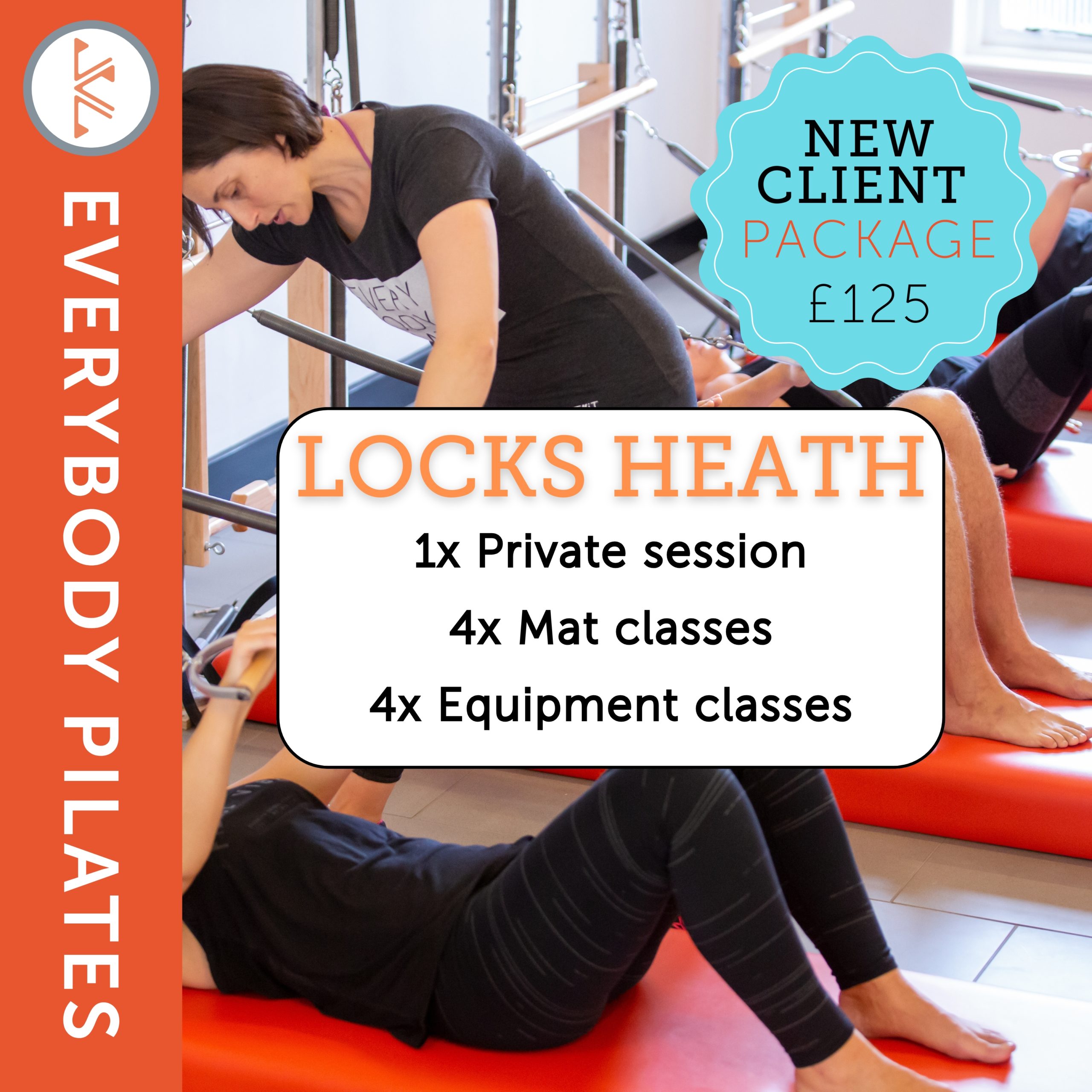Our New Client Package is the perfect introduction to Pilates!
Do you ever wonder – “What Pilates class should I take?”
Choosing the right Pilates class can be overwhelming, with options like Mat, Reformer, and Tower Pilates—each offering unique benefits. This guide breaks down the differences to help you decide which class aligns best with your goals, whether it’s building core strength, enhancing flexibility, or recovering from an injury. Discover how these Pilates methods complement each other to create a holistic fitness experience.

Mat Pilates
Mat Pilates:
Mat Pilates is an excellent introduction to Pilates without equipment, focusing on foundational strength and flexibility
What It Is:
- Mat Pilates is performed on the floor using a Pilates mat. Sometimes, small props like a Pilates power circle, or hand weights are used too.
Purpose:
- Mat Pilates was developed by Joseph Pilates as an accessible way for anyone to build core strength, flexibility, and body awareness wherever they are. Joseph Pilates gave the mat work as homework for clients to do at home, as it’s a perfect example of Pilates without equipment, ideal for building strength and flexibility anywhere.
Benefits:
- Core Strength: Focuses heavily on building a strong core and better connections as you use your body weight as resistance. If you’re wondering how to tone your body without needing any large equipment, mat Pilates is a great starting point.
- Flexibility: Encourages greater flexibility, mobility and range of motion throughout the body.
- Accessibility: This can be done anywhere, making it a versatile and cost-effective option.
- Foundation: Provides a strong foundation in Pilates principles, which can be applied to more advanced equipment-based practices.

Classical Pilates Reformer
Reformer Pilates:
If you’re new to Pilates, the Pilates Reformer for beginners offers an approachable way to add resistance training to your routine, enhancing muscle tone and flexibility.
What It Is:
- Reformer Pilates uses a piece of equipment called a Reformer, which consists of a sliding carriage, springs, ropes, a box, a pole and handles.
Purpose:
- Joseph Pilates designed the Pilates Reformer to add spring resistance to the exercises, which helps to build strength, flexibility, and balance, which can challenge the exercises more and offer more support and alignment.
Benefits:
- Resistance Training: The adjustable springs allow for varied resistance levels, challenging, stretching and strengthening the muscles in different ways. The Pilates reformer helps tone the body, and build muscle.
- Alignment and Precision: The Reformer’s design helps ensure proper alignment during exercises, which is beneficial for everyone, ensuring that the right parts of the body are activated and used, especially for those needing extra support. The springs give feedback on where and how to recruit muscles, strengthen and stretch correctly without overloading.
- Variety of Movements: Allows for a wide range of exercises that target every muscle group and plane of movement, including movements that might be more difficult to achieve on the mat without spring resistance.
- Rehabilitation: Particularly beneficial for injury recovery as it provides support and controlled resistance, making it ideal for rehabilitation.

Tower Pilates Equipment
Tower Pilates:
For those exploring which Pilates apparatus is not commonly used, the Tower is often less known compared to the Reformer or Mat Pilates but offers unique benefits for mobility and strength.
What It Is:
- The Tower, or Pilates Cadillac, is a vertical piece of equipment with various springs, straps and mat. The tower unit is attached to the wall, whereas the Cadillac is a standalone piece of equipment with a raised mat and overhead bars, which is ideal for those who come to Pilates for mobility issues.
Purpose:
- The Pilates Tower was developed to enhance movements by adding spring resistance to a wide variety of floor exercises in standing, seated and lying down positions. Helping users build muscle, tone their body, and increase flexibility.
Benefits:
- Targeted Strengthening: The springs and bars allow for more focused resistance and muscle work in the full body and spine. This equipment is particularly beneficial for individuals looking to tone their body and strengthen muscles while improving posture and spinal alignment.
- Spinal Decompression: Exercises on the Tower can help lengthen and decompress the spine, which is beneficial for everyone, especially for those with any type of back niggles, aches or pains.
- Versatility: Provides a variety of exercises and movements that combine the benefits of both floor exercises with spring resistance, allowing for comprehensive, full-body workouts.
- Enhanced Stretching: The Tower’s structure allows for deeper stretches and more controlled movement, improving flexibility and muscle lengthening.
Summary
- Mat Pilates is great for building foundational strength and flexibility using your body weight, making it an ideal choice for Pilates without equipment.”
- Reformer Pilates adds resistance and support, offering a more challenging and varied workout, particularly good for those needing rehabilitation or full body, more focused, advanced resistance training.
- Tower Pilates combines elements of both mat and spring resistance, focusing on full body strength, mobility, and flexibility, with the added benefit of deeper stretches and spinal decompression.
Each discipline or piece of Pilates apparatus offers unique benefits and can be tailored to suit individual needs, whether you’re looking to build core strength, recover from an injury, or enhance overall fitness and flexibility. The Classical Pilates method works particularly well together as a whole – using the mat, Reformer, Tower, as well as other small pieces of equipment to find deep connections and increase muscle strength and control, as well as flexibility.







